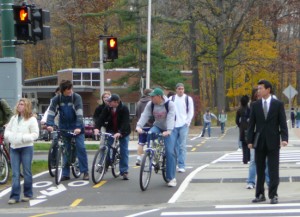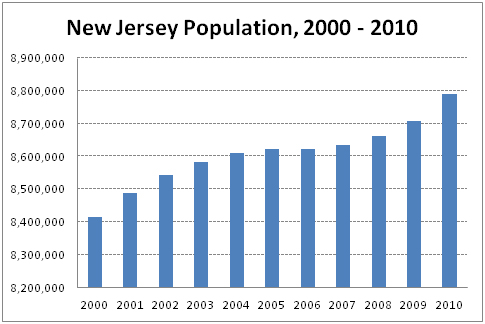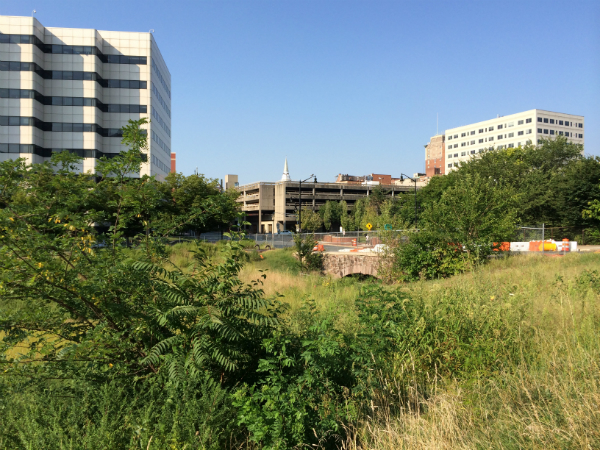New Jersey Future Blog
Walk or Cycle to Work? You Have Company
May 14th, 2012 by New Jersey Future staff
-

Photo: League of American Bicylists
May is National Bike Month, and according to the 2010 American Community Survey, approximately 134,000 New Jersey commuters, or 3.4 percent of those who did not work from home, commuted by walking or biking to the office. This percentage is unchanged from 2000.
- The total masks a divergence in the trends – a decline (-2.7 percent) in the number of commuters walking to work, contrasted with a big spike (+72.5 percent) in the number of bike commuters, albeit starting from a very small base.
- The walk/bike commuter percentage is much higher in communities that feature more compact, mixed-use downtowns, such as Flemington, Harrison, New Brunswick and Princeton Borough, each of which had commuter walk/bike percentages greater than 15%.
- According to the Active Living Network, 43% of people with safe places to walk within 10 minutes of home meet recommended activity levels, while just 27% of those without safe places to walk are active enough.
New Jersey Municipalities and NJDOT Are Addressing the Growing Demand
Following the lead of Montclair and the New Jersey Department of Transportation, more than 25 municipalities and three counties (Monmouth, Mercer and Essex) have adopted Complete Streets policies, and most of them have posted their policies online. These policies usually focus on such actions as considering the provision of bicycle and pedestrian ways along all new and reconstructed roads up to a certain cost maximum; recommending that transportation planning take into consideration linkages among various modes – for example, between transit and walking or cycling – and recommending all future transportation “infrastructure,” such as signals, crossings, signage, street furniture and transit facilities, to be planned with the needs of all transportation users in mind. Considering the needs of all users when designing, building or repairing a street may help encourage additional commuters to bike or walk to work, or make them more willing to walk or bike to transit instead of driving. Recognizing the need for additional education, the Department of Transportation has been hosting regional workshops to highlight the benefits of complete streets and encourage additional municipalities and counties to adopt policies.
These are positive developments, and studies show the idea of Complete Streets enjoys wide public support. Recent studies have demonstrated that younger Americans are driving less, creating more consumer demand for walkable communities. According to a 2011 Monmouth University poll, New Jersey residents would like to see more communities where a variety of transportation options exist and neighborhoods are within walking distance of shopping and other services. Two-thirds of New Jersey residents feel the state needs more of these communities and nearly three in four residents say they would definitely (46 percent) or probably (27 percent) want to live in such a community.
Bike- and Walk-Friendly Communities Benefit Everyone
The benefits of walk- and bike-friendly communities are numerous; allowing people to bike and walk to their daily destinations has a positive impact on economic development, the environment and people’s health. In partnership with Shaping NJ, New Jersey Future has been promoting the concepts of healthy community design as one strategy to begin to reverse the obesity epidemic.
According to a 2011 study published in the American Journal of Preventive Medicine, researchers found that adults who move to a denser, mixed-use neighborhood increase their levels of walking for both recreation and transportation, decrease their automobile travel, and increase their use of public transportation.
These data provide good reason to celebrate May as National Bike Month, and there are many great community events planned here in New Jersey. Consider biking or walking to work during Bike to Work Week (May14-18). If unsafe streets make that impossible, consider working with your local municipality to pass and implement a Complete Streets policy. Finally, enjoy the opportunity to ride on the weekends in one of the many places in the Garden State that encourage recreational cycling.
















